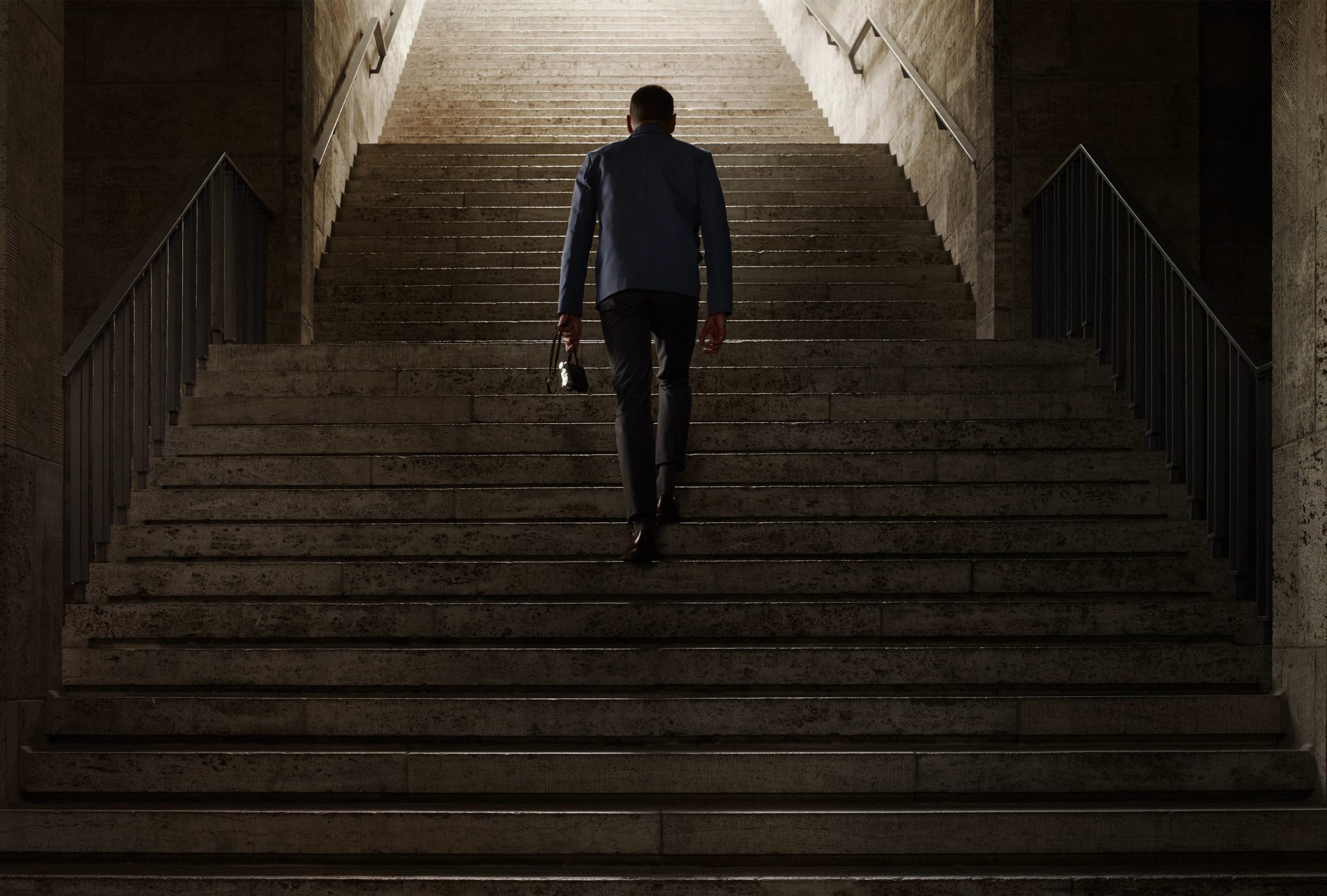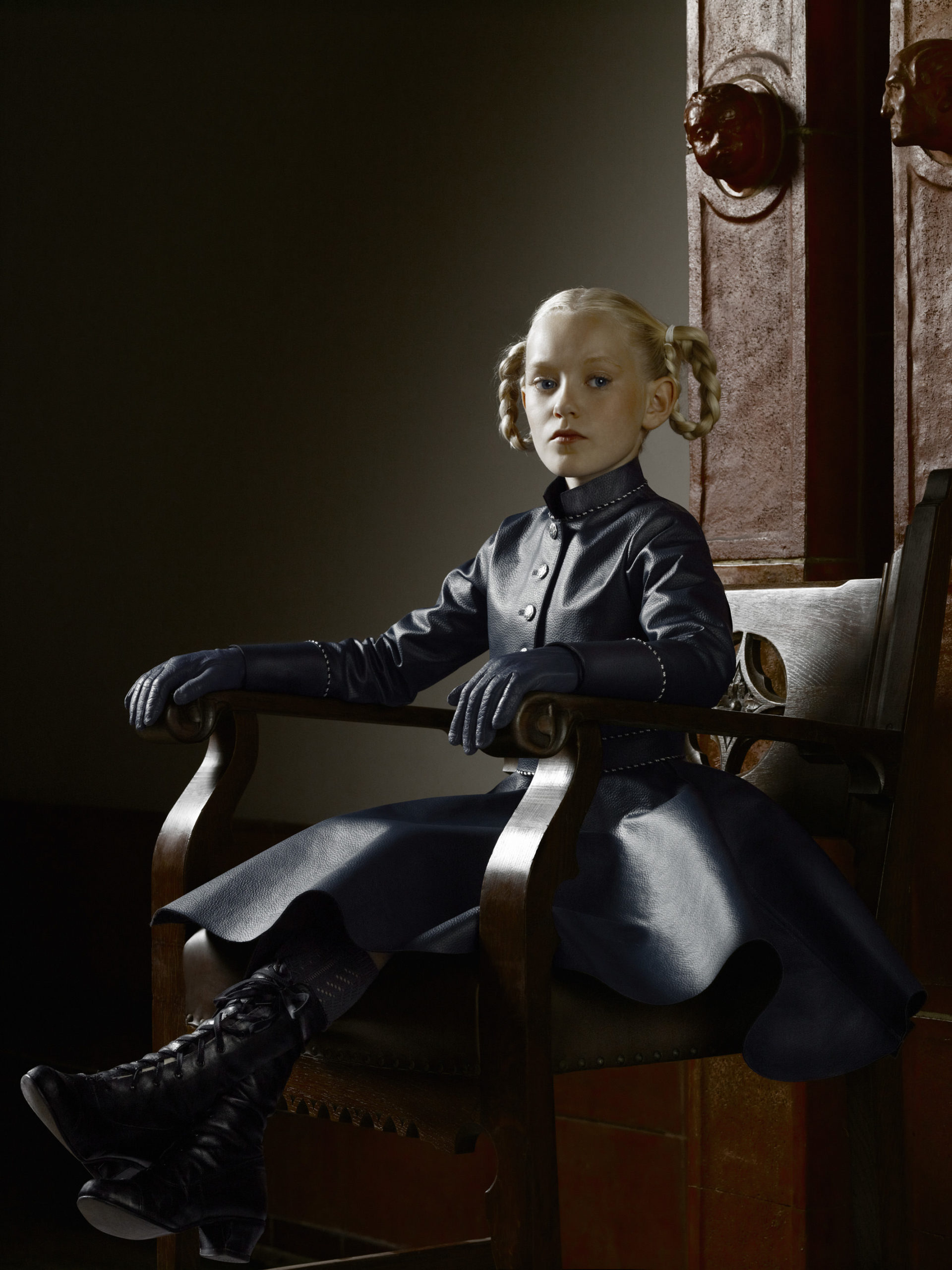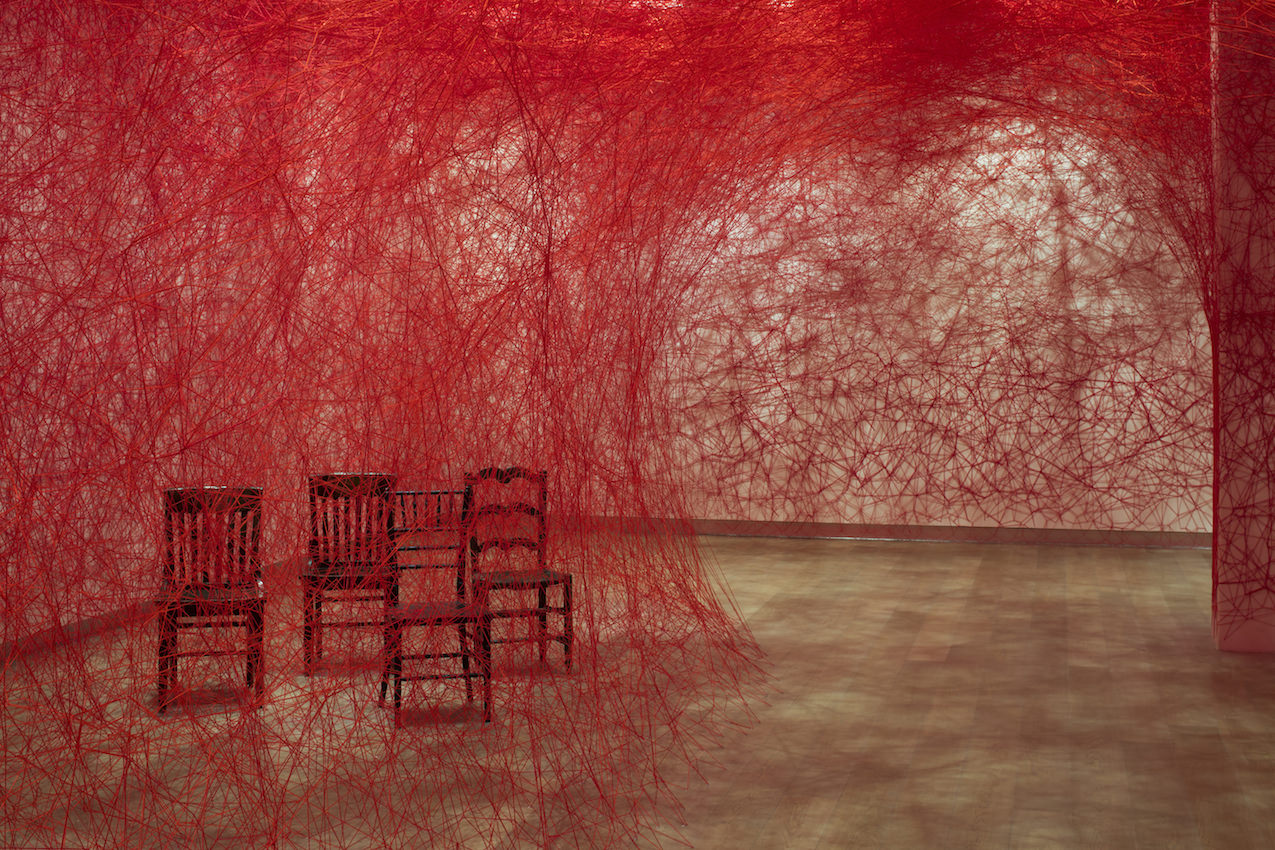Dutch photographer Erwin Olaf is currently exhibiting a new series of photographs at the Galerie Rabouan Moussion in Paris, a gallery that tends to focus on art from Russia and Eastern Europe. The series is the first that Olaf has taken outside his studio which he felt was becoming too cramped for his dream scenarios. Having visited around forty different sites, he settled for seven of them, those with the most visual, but also historical, resonance: the building in front of which John F. Kennedy gave his “Ich bin ein Berliner” speech but also a swimming pool in which high-ranking Nazi officials came to bathe or sittingrooms that are made to seem haunted by the constrictive ghost of Hitler himself.
Olaf’s photographic style has always inclined him towards the theatrical and this series is no exception, despite the fact that it was shot on location. One thing that has changed, however, is that Olaf’s surrealism has become more subdued: his figures are less gory and expressionistic, they necessitate less obvious digital modifications. Suggestions of horror or emotional coldness have become more interiorized. Whereas an early series such as “Separation” showed a mother and child in black latex S&M masks, “Berlin” has children wearing more discreet black leather gloves. Emotional deprivation and dreamy atmospherics are achieved through posture, neutral facial expression and finely combed hair.

The “Berlin” photographs do not invariably offer straightforward narrative content. Freimaurer Loge Dahlem depicts a wood-carved sittingroom space in the Free Masonic lodge. The two static figures in the foreground make the place look like a scene from a world in which despotic white children have become the master race. They command human toys. Hence the figure of an African athlete sporting medals all over his chest and midriff. On the left hand-side of the picture, a gloved child in a suit points an accusatory, domineering, silencing, paralysing finger at the man.
The most compelling story behind this photograph seems initially to be the idea that it is an allegorical representation of Jesse Owens and his 1936 victories at the Nazi-organized Olympic Games. The athlete’s skin-colour is deliberately matched with the mahogany wainscoting and his medals echo those depicted by the painting of the Masonic master in the centre of the room. These elements paradoxically suggest both equality and belonging but also submission and objectification.

Berlin,
While earlier photographs tended to portray children as victims, this exhibition could be subtitled the “Rise of the 21st Century Child-King.” The installation that greets you as you enter the gallery brings this point home most forcefully. A not-so-merry-go-round of headless child-mannequins circle a kneeling, blindfolded, clownishly-clad drag queen. The accompanying recording evokes the grisly children’s song in Fritz Lang’s film M.








